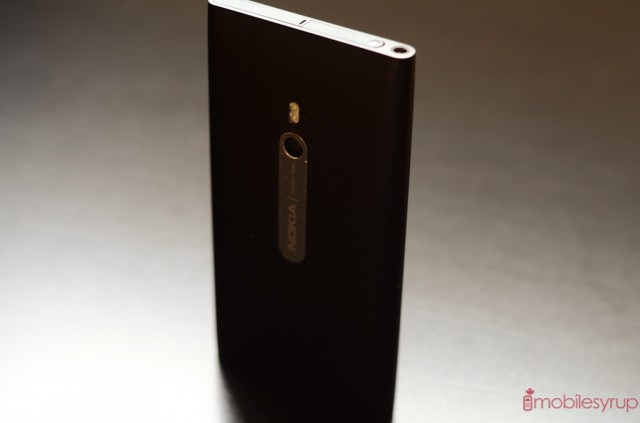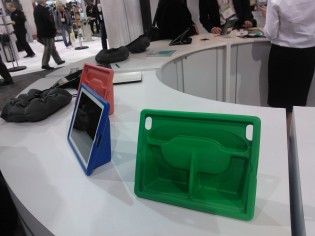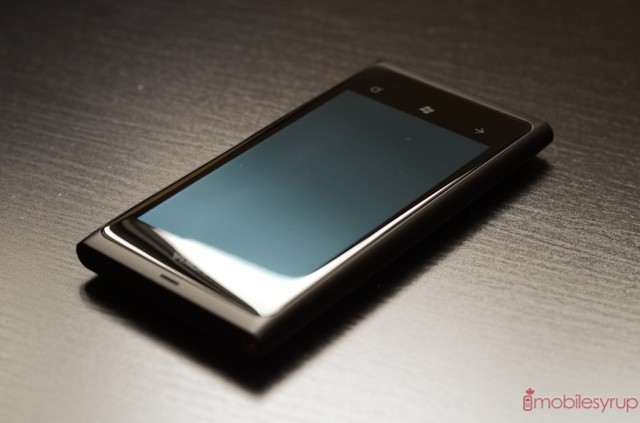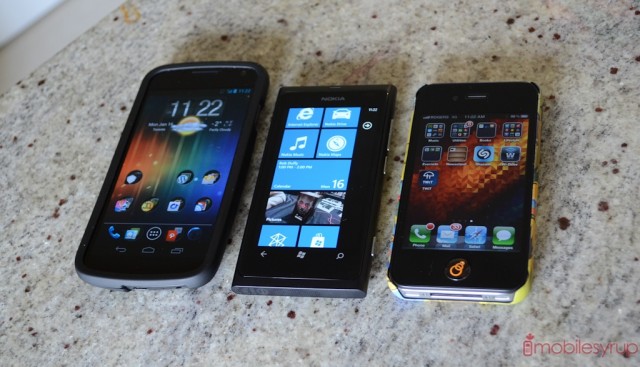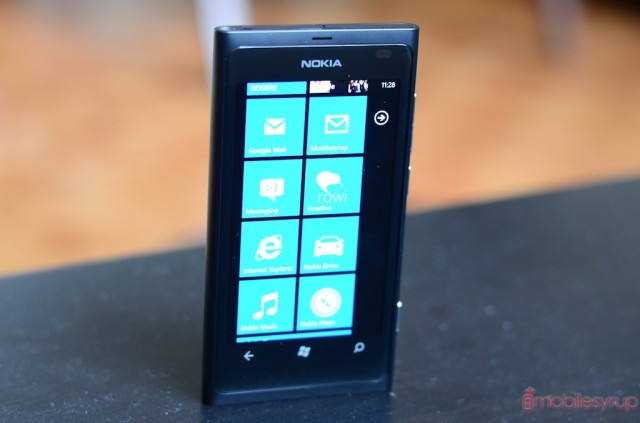
We know that TELUS is getting the Nokia Lumia 800 soon, so when we got our hands on the European version, instead of waiting for the retail version we thought we’d do a quick hands-on to tide you over.
It’s a gorgeous, stunning device. The Lumia 800 may just be the most attractive smartphone I’ve ever used. I seriously think it’s a piece of art in a way high-end a high-end luxury car justifies its ridiculous price. Except the Lumia 800 is a mass-market piece of plastic polycarbonate, and while it loudly announces Nokia’s return to prominence in North America, the majority of the onus lies on Microsoft to create a viable platform and attractive ecosystem for consumers.
Nokia’s done their part, though. Despite a few initial misgivings — the 3.7-inch 480×800 ClearBlack AMOLED display has a PenTile matrix, so text is a bit blurry — the Lumia is great addition to the canon, and will easily be the best Windows Phone available in Canada when it is released.

The handset feels wonderful in the hand. The matte finish and unfettered design means there are literally no seams to disrupt your hand. Unlike most plasticky handsets, the Lumia 800 has a heft usually reserved for metal bodies, but without all the signal attenuation and overheating that comes with it.
What Nokia describes as a “2.5D” screen is merely a piece of convex Gorilla Glass affixed atop the AMOLED display, but it has a noticeable effect on the how your easily your fingers interact with the device. The glass slopes down as it approaches the bezel so as not to interrupt your thumb as it swipes from side to side on the Metro interface. The effect is subtle but important, as Windows Phone relies heavily on moving horizontally between screens, and Nokia has absolutely nailed this dynamic.
Below the screen, which by nature is perfectly black and blends well into the surrounding darkness, are the three obligatory Windows Phone buttons: Back, Windows and Search. Each gives off a satisfying moment of haptic feedback, as does the right-side camera shutter when held for a second. Even when the phone is locked and the screen turned off, holding down this button will open the fantastic camera app, which, on the Lumia 800, takes excellent photos.
The 28mm lens has an 8MP sensor and uses Carl Zeiss optics, so it’s safe to say the Lumia takes fantastic photos. Video, despite the high quality sensor, is relegated to 720p as the Lumia’s 1.4Ghz single-core processor cannot handle the encoding responsibilities of 1080p.
In fact, Microsoft and Nokia would have you believe that a single-core processor and 512MB RAM is sufficient to run even the most complex of computational and graphical tasks, but that is not entirely true. Like iOS, Windows Phone is an inherently efficient operating system, with limitations imposed on background tasks. Rarely, if ever, did I feel like an app should have opened more swiftly, or a horizontal swipe propel more smoothly, but the limitations are there. Loading graphics- and Javascript-heavy websites is often much slower on the Lumia than on an iPhone 4S or Galaxy Nexus, though so far this is the only major gripe I have with performance.
Because I am using a European version of the Lumia 800, the 850Mhz radio bands are missing for full 3G in Canada. As a result I am often stuck on EDGE when indoors, or will only have a few bars of 3G by virtue of a less powerful 1900Mhz signal. Despite this, call quality and overall signal reliability has been excellent, as has battery life.
Without doing comprehensive battery tests (which will have to wait until the retail version) I have not been disappointed with the longevity of the Lumia 800. Regularly lasting a day or longer, Windows Phone devices benefit from being able to control the number of background tasks, and, like iOS, apps are automatically suspended when not in the foreground.
Though we’ll dive deeper into the app situation in the review, Windows Phone has what many analysts consider an ecosystem dilemma. How do Microsoft and Nokia entice developers to create apps for yet another ecosystem, especially when there are so few devices out there? And, until there are more devices in the wild, developers will be reticent to dedicate time and money to the platform. But more users need to be using Windows Phone devices to entice dev houses.
Nokia has the best chance of penetrating the market with its Lumia line. Though TELUS will be getting the 800 in the near future, there is a distinct possibility one of the Canadian carriers will pick up the 4.3-inch LTE-powered Lumia 900.
Windows Phone Mango is a great operating system — as we told you before — but it needed great hardware to back it up. Nokia is a good fit, and is even bringing some of its legacy Symbian apps like Nokia Maps and Drive to the table, but fundamentally it comes down to consumer demand.
There is no doubt the Lumia 800 is a gorgeous phone, but the problems that plague the rest of the ecosystem still exist here. Hopefully, with the momentum Microsoft and Nokia have behind them coming off CES, by the time TELUS releases the phone there will be more apps and fewer limitations.

